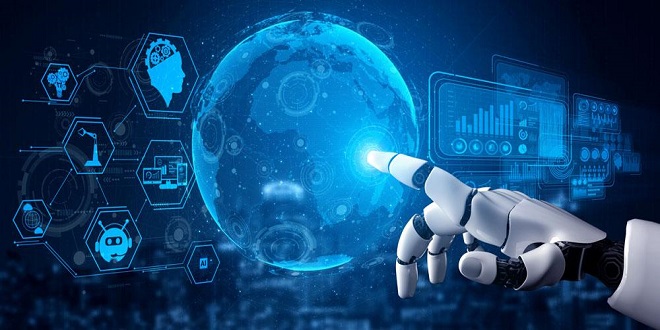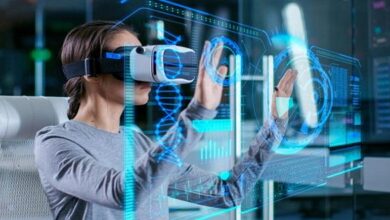Machine Learning in Everyday Activities

As AI uses sound and languages, human-machine interactions are quite common. AI-powered chatbots are increasingly common in banks, restaurants, and stores. Developers must be proficient in language, as it is the basis of AI exchanges.
Language processing and audio/voice technology are great tools to increase efficiency and personalize your services. It allows humans to do higher-order tasks. These investments have been made by many companies due to their high ROI. More money means more opportunities to experiment which leads to innovation and successful rollouts.
Processing of Natural Language
NLP is a method that makes computers more human-like in understanding written and spoken languages. It is used for voice recognition and text annotation. NLP allows models better understand and interact more with people. This has important business implications.
Processing of Sound & Voice
Machine learning uses audio analysis to detect anomalies, voice recognition, music retrieval and other purposes. It is common to use models to identify sound or speaker, classify an audio clip, or group soundscape recordings.
Transcription of speech is simple. The first steps to prepare the data for analysis of the machine learning environment are audio collection and digitization.
Data Mining of Recorded Sound
For digital audio AI, high-quality data is required. For voice-activated searches, transcription projects, and training automated systems, speech data is necessary. Appen can help you find the information you are looking for. Role-playing and impromptu conversations are two examples of these methods.
Record commands to train Alexa or Siri. Sometimes audio productions require the laughter of children or cars passing by. A phone app, server or audio recording equipment can collect data.
Annotating data is required. Audio clips can be wav, MP3, or WMA files with uniform sampling rates (also called the sampling rate). If you extract audio at a specific rate and sample it, a computer can determine the source’s intensity.
Recorded Commentsary
Once you have collected enough audio data, it is time to annotate it. The audio processing process begins with the separation of the audio into strata and speakers. A large number of human labelers are recommended as annotation assignments can take so much time. You can find qualified annotators if you are working with voice data.
Analyzing Sounds
There are many options when it comes to analyzing data. These are two data mining methods that are very popular:
1. Auto-Speech-Recognition (Audio Transcription)
Transcription is also known as Automatic Speech Recognition (ASR) and improves human-machine communication across many industries. NLP models are used to accurately transcribe spoken audio. Computers used pitch to record pitch before automatic speech recognition.
Computers can analyse audio samples to find patterns, and then compare them with linguistic databases to identify spoken word. ASR can convert audio to text using a variety of programs and methods. There are two common models:
* The acoustic method converts sound into phonemes.
* A language model connects phonetic representations with vocabulary and syntax.
NLP is a key factor in ASR accuracy. ASR employs a machine-learning environment for accuracy improvement and human supervision.
ASR technology is evaluated for its accuracy and speed. Automated speech recognition strives for human-like accuracy. It is still difficult to identify accents and dialects, and block out noise from the environment.
2. Audio Classification
Multi-format input audio files can make it difficult to understand. Sound categorization can be a great solution. Audio classification begins with annotation and human-led classification. To sort audio, the teams will use a classification algorithm. Audio is more than its sound.
When applied to speech files, audio classification can identify language accents and semantic content. A file can be categorized to identify musical instruments, music genres, or musicians.
Opportunities and Obstacles in Processing Sound, Voice, or Language
These obstacles must be overcome in order to create effective audio and text processing algorithms.
Noisy Data
If you are trying to understand a speaker’s words, but are distracted or distracted by traffic sounds, then you will be dealing with noisy data.
Language Diversity
Although natural language processing has advanced, robots can still not fully understand human speech. Humans possess a variety of linguistic abilities, and their speech can take many forms. Our vocabulary and language are affected by our typing styles. This problem can only be solved if there are enough examples.
Differential Complexity of Speech
Written and spoken words are very different. Sentence fragments, filler words and awkward pauses are all common. There are no pauses between sentences. Machines can’t comprehend and contextualize uncertainty. People can.
Computers must be able to handle variations in pitch, loudness, word speed, and other characteristics. Deep learning and neural networks are being used by researchers to teach robots human languages.
Weather conditions, such as rainfall, temperature, and sunlight, directly impact agricultural activities. Farmers rely on favorable weather patterns for crop growth, while extreme weather events like droughts or floods can have devastating effects on crops.





